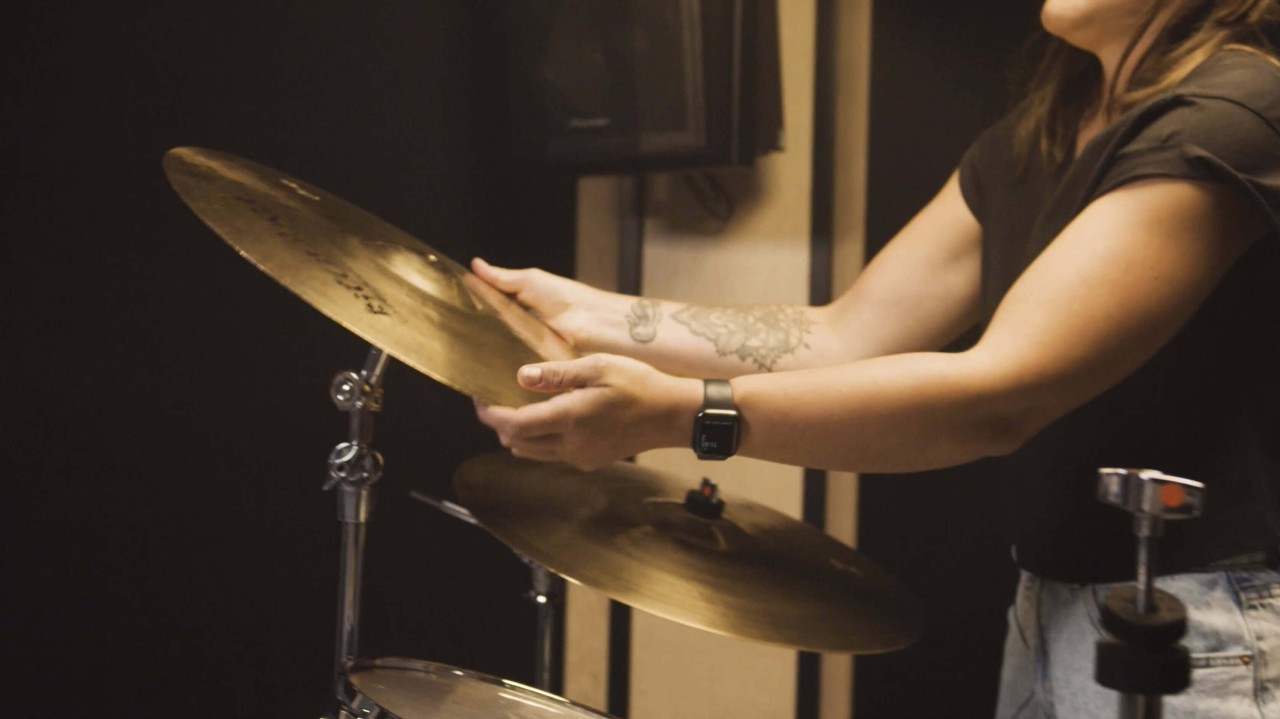
■ Features
Erin Wayne is a session drummer who’s been playing and teaching drums for around seventeen years. She recently visited our Pirate Hackney drum studios to demonstrate how to tune a five piece drum set.
You can also watch Erin’s tutorial on how to set up a five piece drum set on the Pirate Blog.

You might be wondering whether you need to tune your drums. Tell-tale signs that you do are if you can hear a rattle or a dud note. However, when it comes to how often you should tune your drums, there's no hard and fast rule.
There's no specific key that drums are tuned to either. How you tune your drum set depends on the genre that you’re playing. For Jazz, most of the notes are a bit higher. Whereas when you're tuning your drums for Rock or Metal, you’ll want your toms and your kick drum a bit crunchy and punchier, so you'll set them a bit lower.
I like my snare to be nice and tight so it has a big snap when I’m hitting it, so personally, I tune my snare every time I play. However, I probably only tune the other types of drums in my kit about once a month.
The good news is that the only kit you need to tune your acoustic drums is a drum key and a pair of sticks. Once you have these, you’re ready to follow the tutorial below.
TOP TIP: Always keep a drum key handy. I keep mine on my house keys. There’s nothing worse than getting to a drum studio where the drums don’t sound good and you don't have a drum key. Not many studios have them, so keep a drum key on you at all times and you’ll never be stuck.
Starting with the biggest, I'm going to demonstrate how to tune your bass drum or kick drum. When you’re tuning a kick drum, you really don't want to tune it too high because it will just sound a bit odd. You always want to preserve that bass sound from your kick drum, almost like a marching drum feel.
So, to tune your bass drum, take your drum key and pop it on each of the lugs on the side of your drum (The lugs are the metal bits that hold your drums together). I usually loosen the lugs before I tighten them. Then I tighten them by doing about half a turn on my drum key. After a half turn, you want the drum head tension to be slightly loose, but still tight enough to bounce your beater back.
As part of a five piece drum kit, you’ve got three tom drums to tune: left, right and a floor tom. Generally, your left tom is going to be your higher one, the right tom is a bit lower and your floor tom should have that deep, lower sound as well.
Again, when tuning toms, you want the tension to be sort of loose, but you also want your drums to have some bounce back.
On each drum, you want to be able to hit it at various points on the skin and get those different areas sounding like the same note. You can tune toms to notes, but it's not essential and I find that it can be a bit restrictive. I prefer to just tighten all the lugs around the edge so they sound like they’re similar.
When it comes to finding your personal standard tuning for your drums, it’s largely about style and preference. I quite like a deep sounding tom drum, but you shouldn’t be afraid of experimenting and finding your own sound.
I like to play my own snare drum wherever I go. I literally take it with me everywhere. One of the reasons for this is that all snare drums are different. Once you know how to tune your snare drum just how you like it, it's easier to play with the same one all of the time.
As I mentioned earlier, I like quite a high sounding snare, so I tune it super often, and I pretty much tune it as tight as it will go.
TOP TIP: It’s almost cheating, but one thing that makes the drums sound so much sharper, especially when you're recording in the studio, is using Moon Gels. They’re literally a lifesaver for if you’re recording and you want a really clean hit. I just pop one or two on each drum and I immediately hear less of a rattle. I always use Moon Gels when I’m recording.

Once you’ve mastered how to tune your drum kit, you can head over to the Drumming Tips section of the Pirate Blog to learn more playing techniques, from how to hold drumsticks to how to hit cymbals properly, and access free drum practice routines for beginners.
Lastly, if you're wondering which drum set is best for beginners, it's worth trying the kits at Pirate's drum practice studios before investing in your own stand up drum set. Even a 3 piece drum setup is very expensive to buy, whereas you can get the works at Pirate and pay per hour.
Pirate has drum practice studios available in cities across the UK, US and Germany - head to Pirate.com to find your closest one and get practicing.